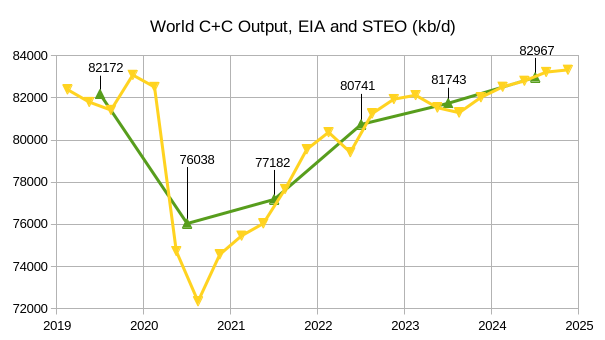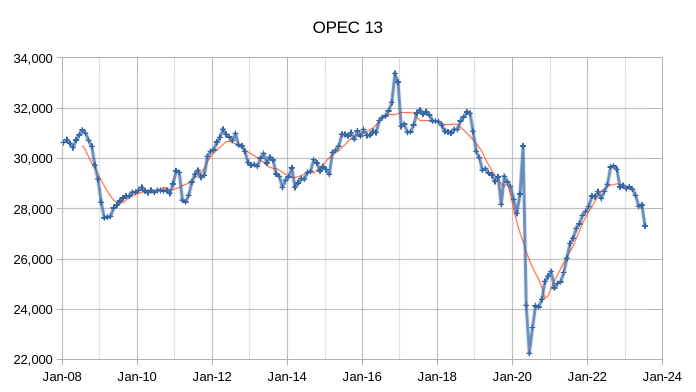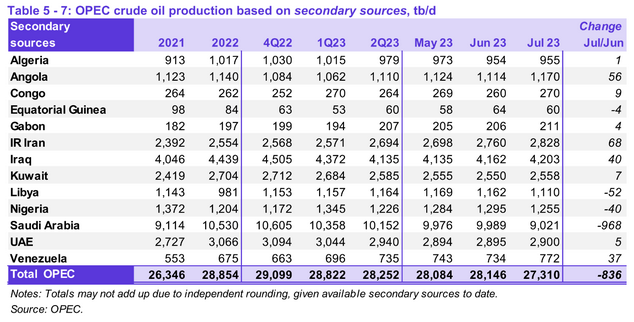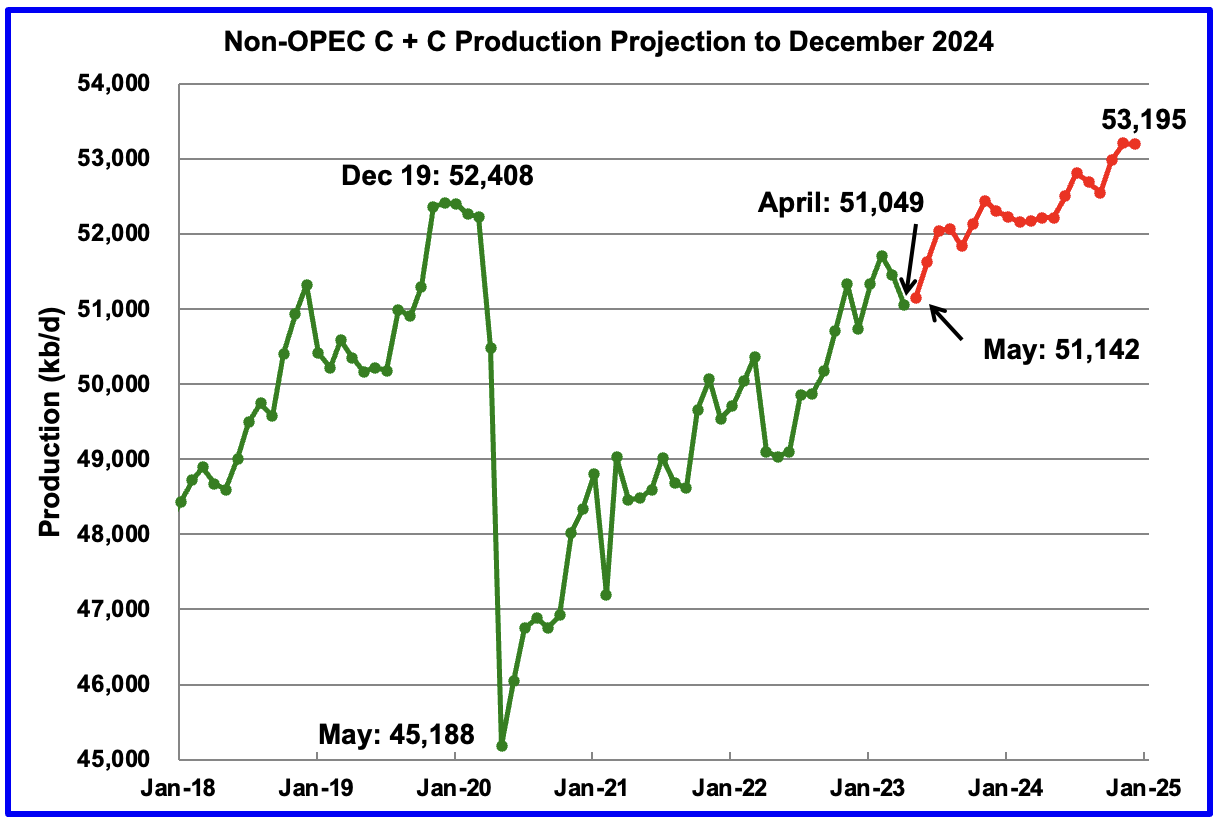The EIA’s Short Term Energy Outlook (STEO) was published in early August. The chart below estimates World C+C by using the STEO forecast combined with past data from the EIA on World Output.

The EIA’s Short Term Energy Outlook (STEO) was revised higher in August compared to July. World C+C output is expected to decrease in the second and third quarters of 2023 and then increase over the next 5 quarters. Annual average World C+C output increases by about 1000 kb/d in 2023 to 81743 kb/d and then to 82967 kb/d in 2024, less than 50 kb/d below the centered 12 month average peak in 2018. This month’s World C+C estimates are about 300 kb/d higher than last month for 2023 and 400 kb/d higher for 2024 due to the revisions in the STEO forecast this month.
Read More

